- Anatomical terminology
- Skeletal system
- Skeleton of trunk
- Skull
-
Skeleton of upper limb
- Bones of shoulder girdle
- Humerus
- Bones of forearm
- Bones of hand
- Skeleton of lower limb
- Joints
- Muscles
- Heart
- Blood vessels
- Lymphatic system
- Nervous system
- Respiratory system
- Digestive system
- Urinary system
- Female reproductive system
- Male reproductive system
- Endocrine glands
- Eye
- Ear
Scapula
The scapula (Latin: scapula) is a flat triangular bone that connects the humerus and clavicle. It is also known as the shoulder bone, shoulder blade, wing bone, and blade bone. The name “scapula” derives from Latin, meaning “trowel” or “small shovel,” which it seems to resemble.
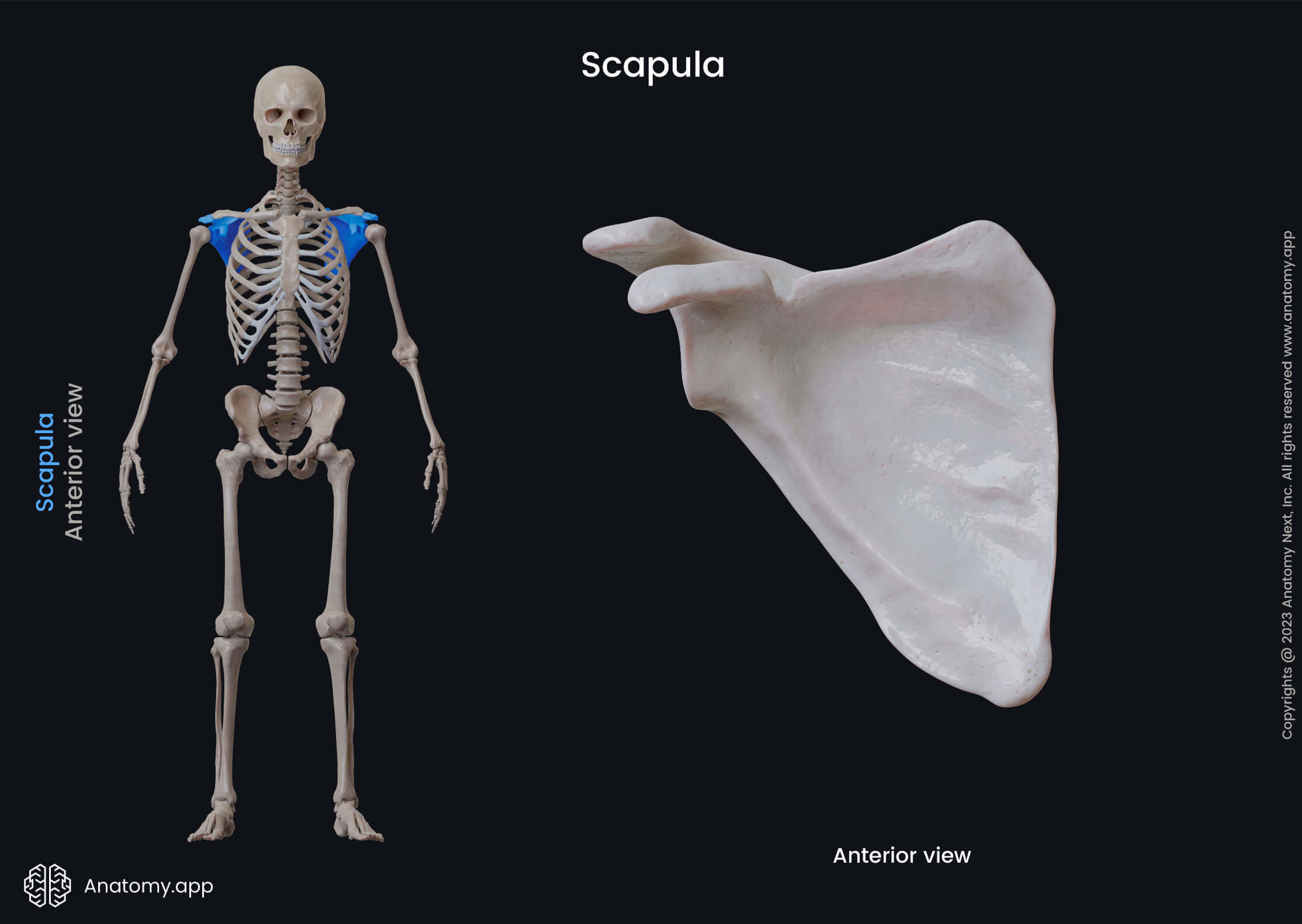
Together with the clavicle, the scapula forms the shoulder girdle which connects the upper limb with the axial skeleton. The scapula is positioned on the posterolateral aspect of the rib cage. It lies over the posterior surfaces of the second to eighth ribs. The scapula has three margins, two surfaces, and three angles.
Margins of scapula
As mentioned above, the scapula presents with three margins, which are as follows:
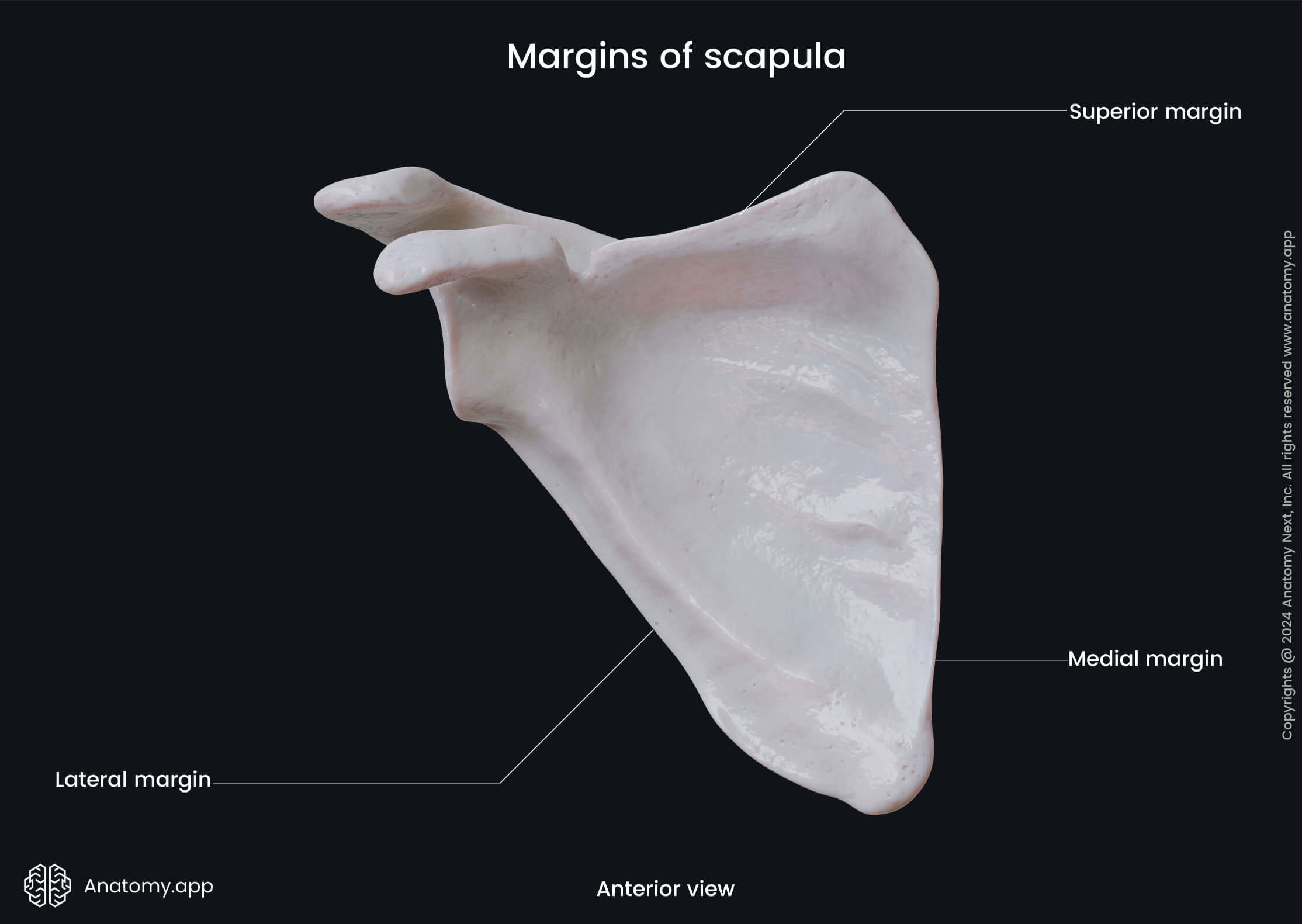
Medial margin
The medial margin (also called the medial border or vertebral margin) is the inner and the longest border. It extends from the superior to the inferior angle. To this margin are attached four muscles - serratus anterior, levator scapulae, and rhomboid muscles (minor and major).


Lateral margin
The lateral margin (also known as the lateral border or axillary margin) is the outer and the thickest margin. It starts in the middle of the lower aspect of the glenoid cavity that is located above the border. Then the lateral margin inclines obliquely downward and reaches the inferior angle of the scapula.
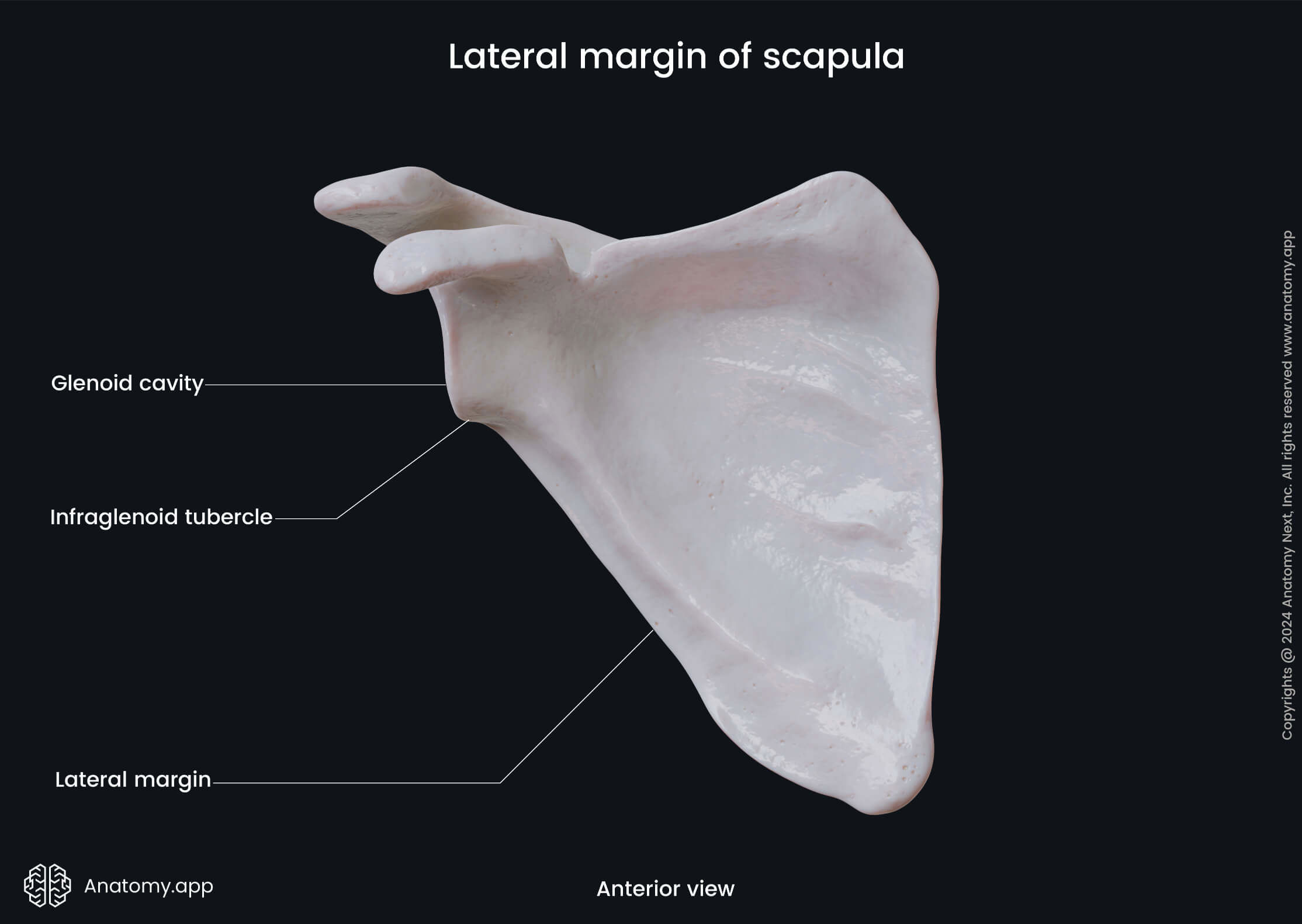
The upper aspect of this border below the glenoid cavity is marked by a rough impression known as the infraglenoid tubercle. It serves as the origin site for the long head of the triceps brachii. This margin also gives origin to the subscapularis, teres minor and a few fibers of the teres major muscle.
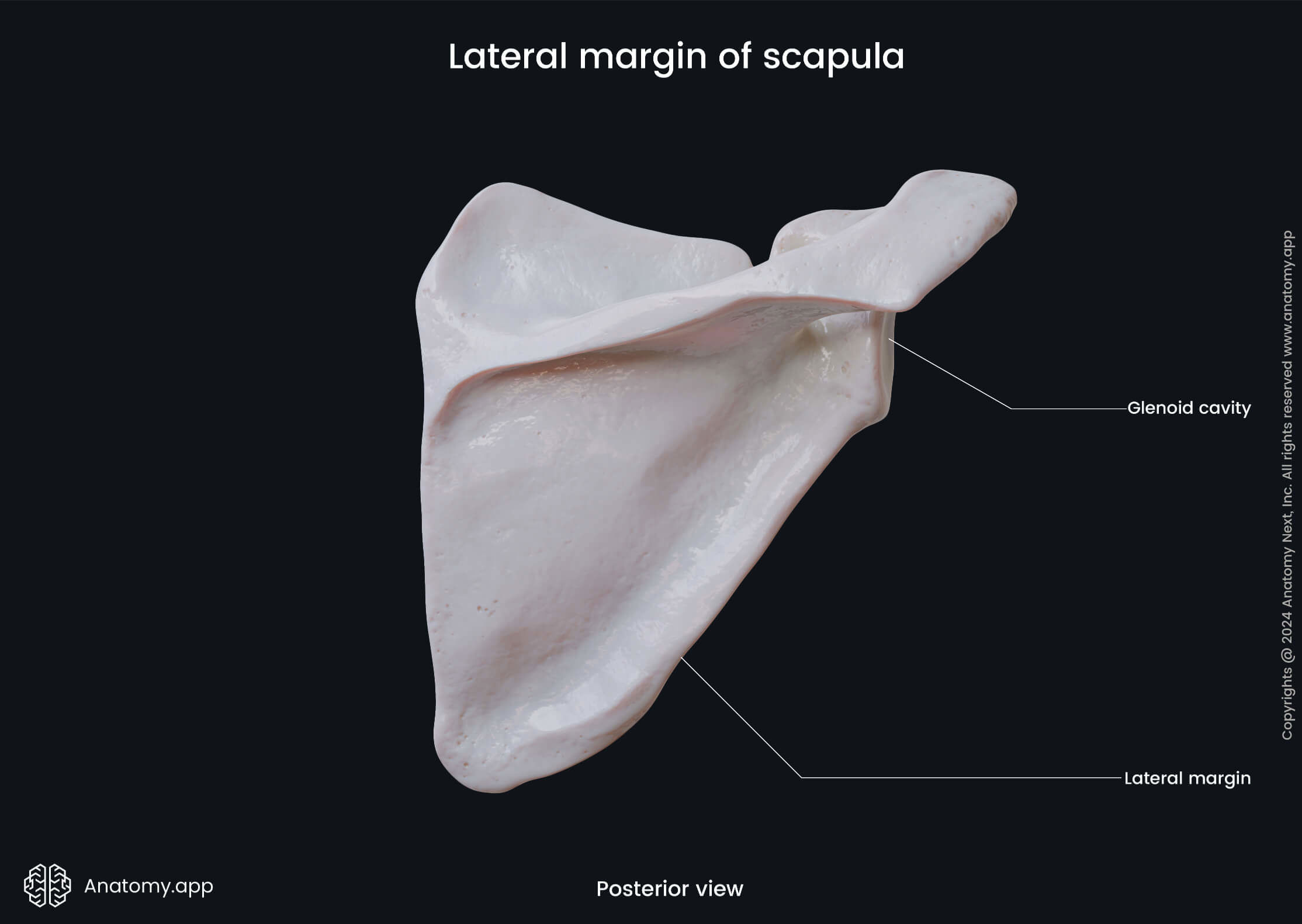
Superior margin
The superior margin (or superior border, upper margin) is the shortest and thinnest of all three. This border is marked by a deep, semicircular notch on its lateral aspect - the suprascapular notch.

The suprascapular notch is converted into a foramen by the superior transverse scapular ligament that extends across it. This foramen serves as a passage for the suprascapular nerve.
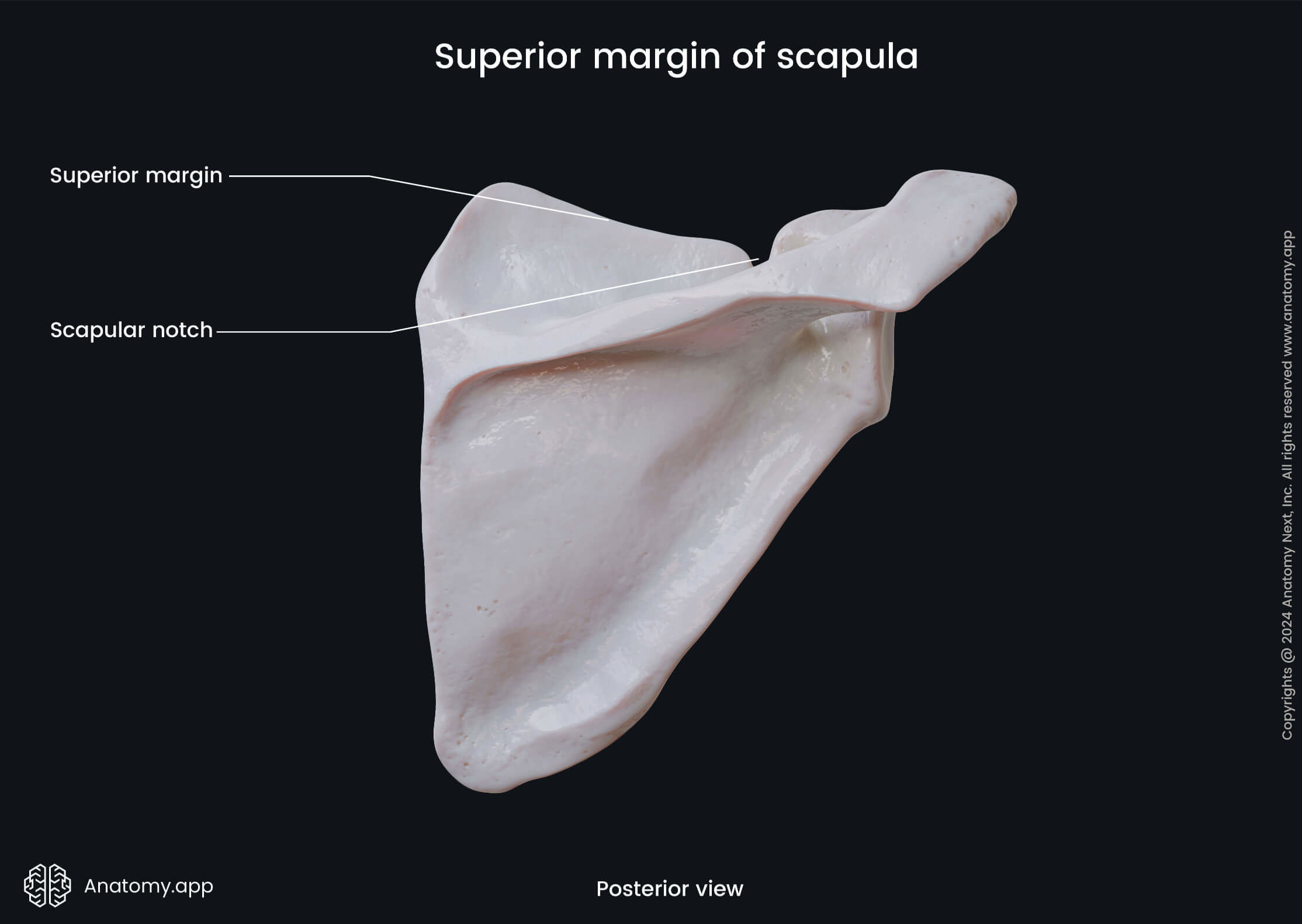
Surfaces of scapula
The scapula is a flat bone that presents with two surfaces:

Anterior surface
The anterior or costal surface of the scapula is projecting forward, and it is slightly concave. This surface is marked by a broad concavity named the subscapular fossa.
The subscapularis muscle attaches to the fossa. Also, some ridges and lines formed by the muscle attachments can be seen on the anterior surface.

Posterior surface
The posterior or dorsal surface arches downward from the superior border of the scapula. It is divided into two unequal parts by a bony ridge that transverses the posterior surface from the medial border to the lateral angle. This ridge is known as the spine of the scapula.
The concavity above the spine of the scapula is called the supraspinous fossa, while the part below the spine of the scapula is known as the infraspinous fossa. Both fossae are connected by the spinoglenoid notch, which lies lateral to the root of the spine.
- The supraspinous fossa is the upper and smallest of two fossae. The medial two-thirds of this fossa serve as an origin site for the supraspinatus muscle.
- The infraspinous fossa is much larger, and its medial two-thirds give origin to the infraspinatus muscle. This muscle covers lateral one-third of the fossa.

The spine of the scapula terminates as the acromion - a process that forms the summit of the shoulder. The acromion is a large, somewhat triangular and oblong process. At first, it projects laterally and then curves forward and upward to overhang the glenoid cavity.
The acromion contains the clavicular facet for articulation with the acromial end of the clavicle. This articulation between both bones is known as the acromioclavicular joint. The acromion also serves as an origin site for the acromial part of the deltoid muscle.
Angles of scapula
The scapula has a triangular shape. Therefore it presents with three angles:
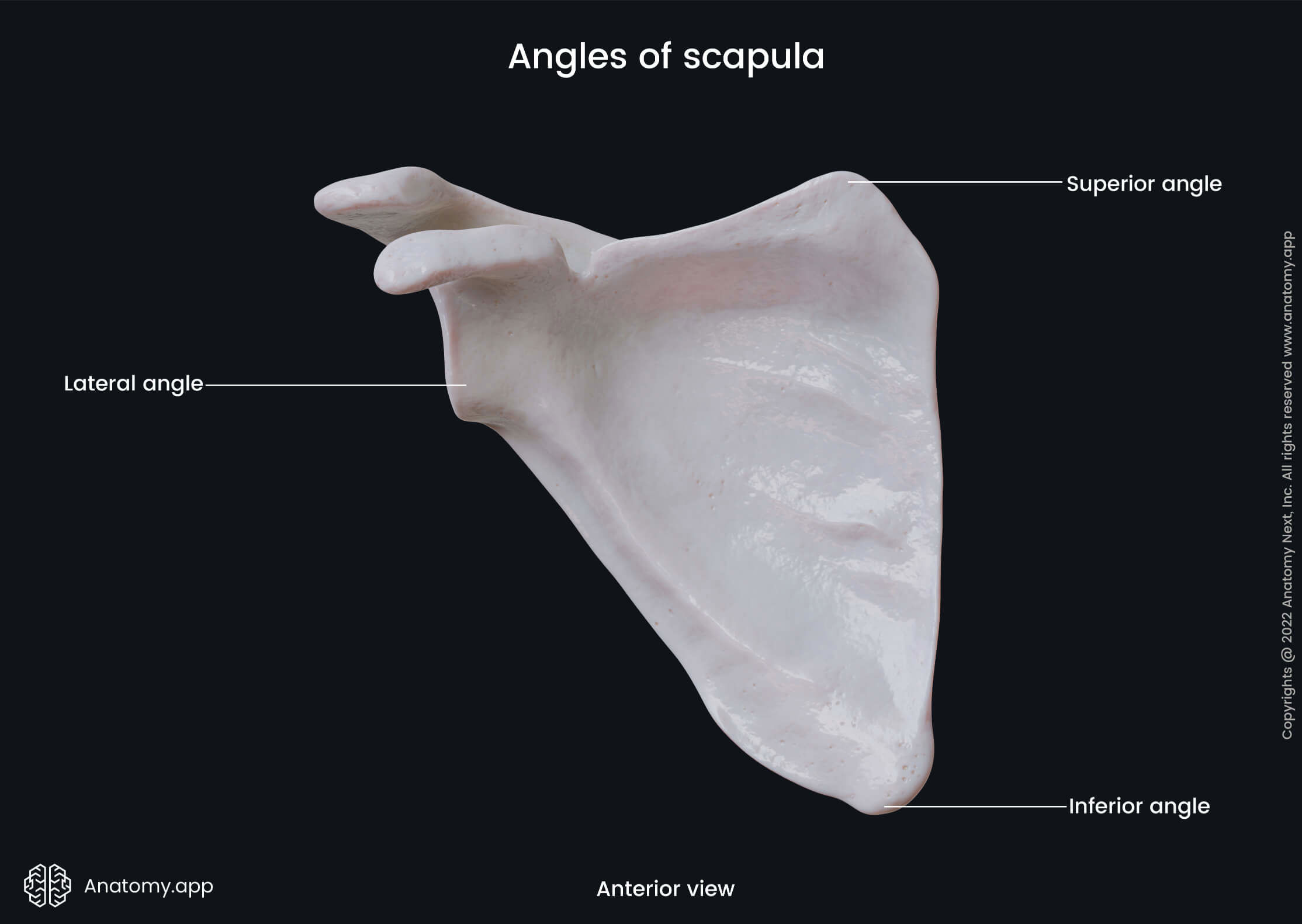
Superior angle
The superior angle is also known as the medial angle, and it is formed by the fusion of the superior and medial borders. It is located at the level of the second thoracic vertebra.
The trapezius muscle covers the superior angle. This angle also gives attachment to a few fibers of the levator scapulae muscle.
Inferior angle
The inferior angle is the lowest part of the scapula formed by the junction of the medial and lateral borders. The latissimus dorsi muscle covers this angle.
The posterior aspect of the inferior angle gives attachment to the teres major muscle. Also, few latissimus dorsi muscle fibers are often attached to this angle.

Lateral angle
The lateral angle of the scapula is also known as the glenoid angle or the head of the scapula. It is the thickest part of the scapula, and it bears the glenoid cavity on its articular surface.
The glenoid cavity forms an articulation with the head of the humerus. The upper aspect of the glenoid cavity presents with a small and rough elevation called the supraglenoid tubercle.
Below the glenoid cavity is located one more rough elevation known as the infraglenoid tubercle. Both tubercles serve as origin sites for the long heads of the triceps brachii and biceps brachii muscles.
Adjacent and medially to the glenoid cavity, the scapula narrows and this area is called the neck of the scapula. A short projection - coracoid process - lies above the neck and glenoid cavity.